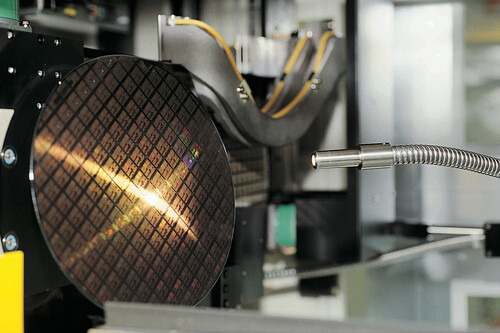China dominates gallium production. In 2022, it accounted for 98% of the world’s raw gallium, and that figure likely hasn’t changed much since. For China, this metal holds strategic value comparable to its importance to the U.S. because of its military applications. Controlling gallium exports also gives China leverage to respond to U.S. and allied sanctions on its semiconductor industry.
Gallium is a unique metal. Its physicochemical properties make it ideal for combining with other metals to create a specialized integrated circuit called a wide-bandgap semiconductor. These chips have three key advantages for manufacturing advanced military equipment: They can withstand higher voltages, temperatures, and frequencies than conventional silicon-based circuits.
In the 1970s, the Defense Advanced Research Projects Agency (DARPA) invested heavily in gallium-based semiconductors because of their military potential. Gallium arsenide played a key role in developing the GPS, radar systems, and precision weapons.
China Takes a Big Step Forward
Today, DARPA also supports gallium nitride (GaN), which is critical for producing state-of-the-art radar systems capable of detecting smaller, faster, and more numerous objects at greater distances. Each of these radars contains several thousand gallium-based chips. The conclusion is clear: Gallium is essential for the U.S., but it is not the world’s only military superpower.
The Chinese military and research institutions have been working with gallium for years, developing technologies to manufacture advanced third-generation semiconductors. While China has plenty of gallium, making integrated circuits with the metal remains a challenge for both China and the U.S.
Chinese scientists discovered that modifying electron energy levels can precisely control trepidation and reduce defects.
Silicon and sapphire substrates are typically used to produce gallium nitride. However, the efficiency of current processes has been moderate because GaN’s hexagonal atomic structure causes a defect known as trepidation. Broadly speaking, this phenomenon shifts groups of atoms within the crystal, affecting its structure and impairing its properties. GaN manufacturing defects lead to electrical leakage, reduce thermal stability, and degrade semiconductor performance.
Until now, researchers have struggled to understand why these defects occur in GaN’s crystalline structure—and how to prevent them. However, a team of scientists led by professor Huang Bing of Peking University has identified the cause of defect formation during GaN crystal growth. They discovered that modifying electron energy levels can precisely control trepidation and reduce defects.
“Traditional strategies to avoid defects include using different substrates and adjusting crystallization temperatures, but these approaches only address the symptoms, not the cause,” the leader of the project said. If China can take this research from the lab to production lines, it could manufacture cheaper, higher-quality GaN semiconductors on a much larger scale. At that point, it wouldn’t be unreasonable to expect China to take the lead in applying third-generation semiconductors to military and 5G technologies.
Image | TSMC



